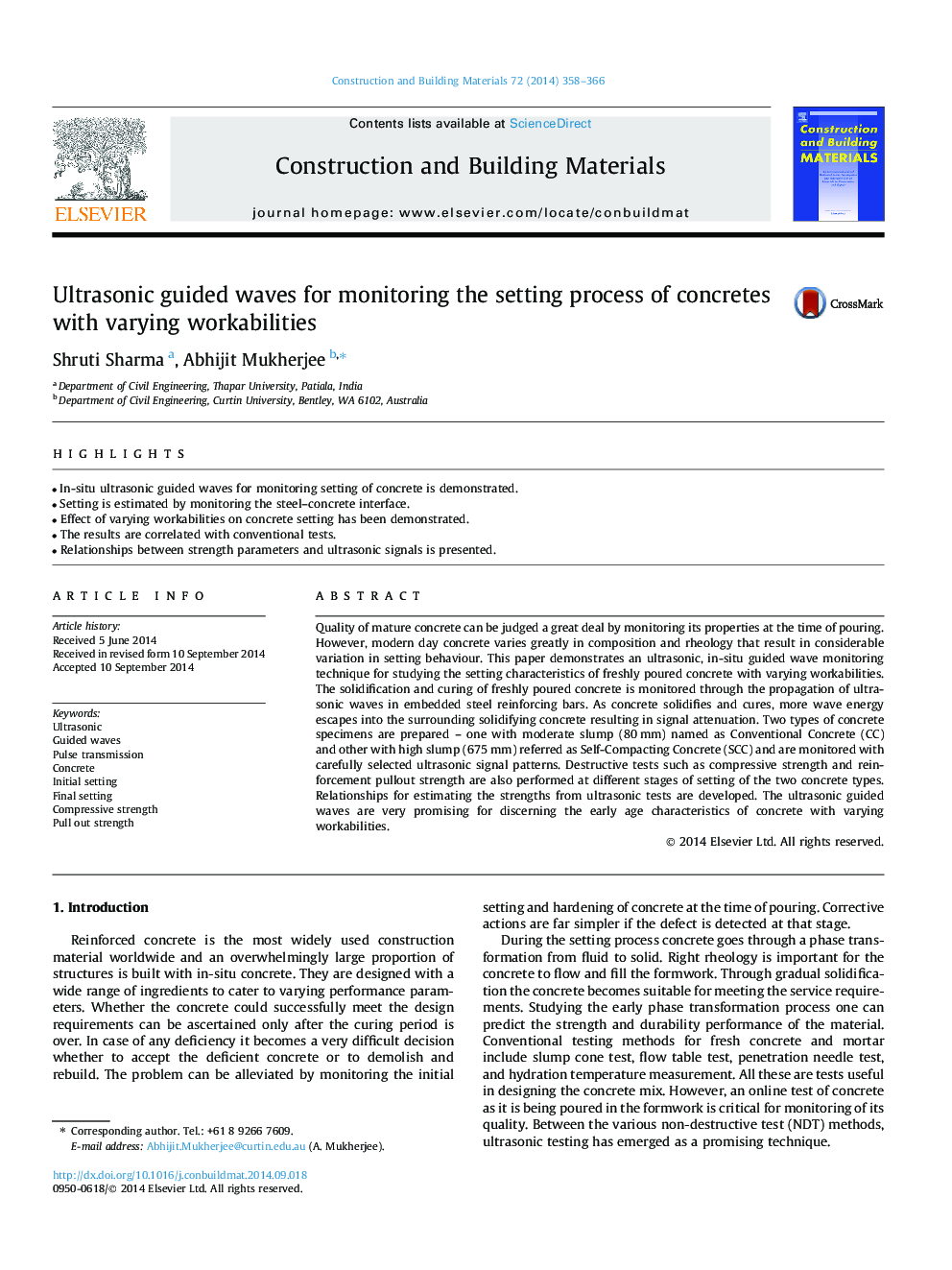| Article ID | Journal | Published Year | Pages | File Type |
|---|---|---|---|---|
| 6722176 | Construction and Building Materials | 2014 | 9 Pages |
Abstract
Quality of mature concrete can be judged a great deal by monitoring its properties at the time of pouring. However, modern day concrete varies greatly in composition and rheology that result in considerable variation in setting behaviour. This paper demonstrates an ultrasonic, in-situ guided wave monitoring technique for studying the setting characteristics of freshly poured concrete with varying workabilities. The solidification and curing of freshly poured concrete is monitored through the propagation of ultrasonic waves in embedded steel reinforcing bars. As concrete solidifies and cures, more wave energy escapes into the surrounding solidifying concrete resulting in signal attenuation. Two types of concrete specimens are prepared - one with moderate slump (80Â mm) named as Conventional Concrete (CC) and other with high slump (675Â mm) referred as Self-Compacting Concrete (SCC) and are monitored with carefully selected ultrasonic signal patterns. Destructive tests such as compressive strength and reinforcement pullout strength are also performed at different stages of setting of the two concrete types. Relationships for estimating the strengths from ultrasonic tests are developed. The ultrasonic guided waves are very promising for discerning the early age characteristics of concrete with varying workabilities.
Related Topics
Physical Sciences and Engineering
Engineering
Civil and Structural Engineering
Authors
Shruti Sharma, Abhijit Mukherjee,
